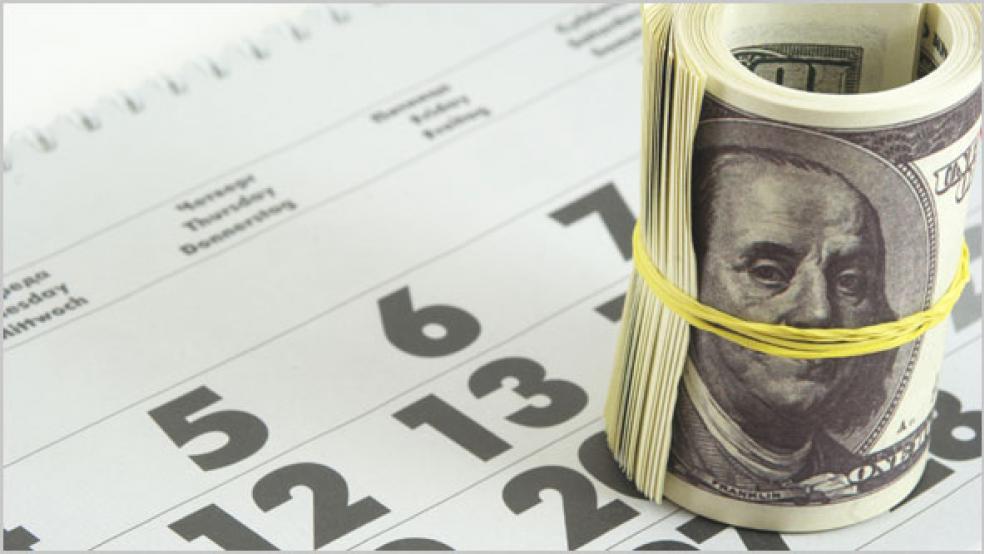Between holiday shopping, parties, concerts and gift wrapping, make room for one more task: whittling down your 2011 tax bill.
A number of smart moves can save a bundle in taxes, but you’ll have to act quickly. Just about all of these maneuvers come with a year-end deadline.
“You don’t want to realize next April that you could have saved yourself money if you had only focused before the end of the year,” says Neil Becourtney, a partner at the tax advisory firm J.H. Cohn.
So skip a holiday lunch or postpone a trip to the mall: Here are a dozen moves that are worth your attention:
Time your income and deductions
In typical years when tax rates are stable, advisors recommend deferring as much income as possible to the next year, to postpone paying part of your income taxes. But with Congress and President Obama still squabbling over whether to extend the Social Security payroll tax cut for another year and how to pay for it, tax rates for the coming year are still an open question.
Given this uncertainty, taxpayers’ best move this year may be to avoid manipulating their income, and focus more on accelerating deductions into this year to lower their 2011 tax bills, says Tim Steffen, director of financial planning at Robert W. Baird. For example, prepay orthodontist costs, or don’t wait until next year to pay your 2011 state and local tax bill.
Calculate your AMT
There is an exception to this advice, however. If you pay under the alternative minimum tax. a parallel tax system triggered by high deductions relative to income, you’ll generally want to defer deductions. That’s because most deductions aren’t allowable under the AMT, says Alan Kufeld, principal at Rothstein Kass.
Give wisely
Before you cut a year-end check to your favorite charity this season, consider giving shares of appreciated stock. You get a deduction for the value of the donated shares, and you won’t owe capital gains taxes on the appreciation. If you bought the stock for $100 and it’s now worth $200, you’re getting a $200 deduction on a contribution that cost you half that.
Keep the rules in mind, however: Contributions are deductible only if you itemize your deductions. The deductions can be used to offset up to 50% of your adjusted gross income, or 30% if you’re giving appreciated assets.
Lock in losses
If you’re sitting on a few investment losses, don’t sweat: “Losses can actually be assets from a tax perspective,” says Matt McGrath, an advisor in Coral Cables, Fla.
If you sell, your losses can offset capital gains realized in the same year. Losses in excess of gains can be used to offset up to $3,000 of 2011 income. If you still have unused losses, you can use them in future years.
Beware of the wash-sale rule, however. If you sell your stock or fund, you have to wait 30 days before buying back shares of the same investment. You can, however, try to replicate exposure by buying an exchange-traded fund ( ETF) or a different fund.
Pay yourself
Amp up 2011 contributions to your 401(k), IRA or other tax-advantaged retirement accounts. Savings in 401(k)s must be socked away before Dec. 31 to be counted as 2011 contributions. While you have until your tax-filing deadline to contribute to any type of IRA or SEP for the self-employed, the sooner that compounding interest starts working, the better.
You can stash up to $16,500 in your 401(k) this year, or $22,000 if you’re over age 50. The maximum contribution to IRAs is $5,000, or $6,000 if you are over age 50
Manage your FSA
If you have pre-tax funds set aside in a flexible spending account for healthcare expenses, use them up before year end, or you lose them.
Remember, however, that this is the first year over-the-counter medications can’t be purchased with flexible spending account (FSA) money. For a list of products, such as bandages and contact lens solutions, that you can buy with FSA funds, check IRS publication 502 online.
If you want a 2012 FSA, you have until Dec. 31 to set it up.
Time your 2011 RMD
IRA investors over age 70 ½ must take annual required minimum distributions (RMDs), which are taxed as income. Those who don’t take a distribution typically face a penalty of 50% of the amount that should have been withdrawn.
This year, however, you can push your required minimum distribution into 2012. While that would keep your 2011 tax bill down, keep in mind you will have to take two RMDs in 2012. That could well push you into a higher tax bracket. Run the numbers to see if it makes sense to defer, or take the tax hit in 2011.
Direct your IRA withdrawal to charity
Under a rule that expires at the end of this year, if you’re over age 70 ½ and you have an IRA, you can give up to $100,000 to a charity directly from your IRA. The gift can be counted as your RMD. You won’t get a deduction, but the distribution won’t be counted as income. This avoids a big tax bill, and can help keep down Medicare premiums, which are based on adjusted gross income.
Consider a sales tax deduction
Taxpayers can either deduct state and local income taxes on their federal tax return or state sales taxes. For most, a state and local income tax deduction is bigger.
But if you live in a low- or no-income tax state, or your income taxes are unusually low for 2011, tally up your sales tax tab to see if it’s a better deductible item this year. If so, and you’ve been planning a big purchase – a car or a new furnace for your home – consider buying before the end of the year to boost your deduction.
Install energy saving appliances
If you’re thinking of replacing your windows, doors or any appliances with more energy-efficient alternatives, you can get a credit for 30% of the cost up to $500 on your 2011 return if you install them before year-end. The credit expires on Dec. 31.
Don’t rush into a new mutual fund
If you’re thinking of investing in a mutual fund, you may want to wait until after the new year. Here’s why: Many funds make taxable capital gains and dividend distributions at the end of the year. These distributions go to all investors, no matter how long they have been in the fund. “Funds make the same dollar-per-share distribution to investors no matter what their unrealized gains are,” Steffen says. Problem is, you’ll owe taxes on the distributions, even if you haven’t booked any gains in the fund yet.
For example, say you buy 100 shares in a fund at $10 share, for a $1,000 investment, and shortly after the fund distributes $1 per share in capital gains – or $100 – to you. Economically things may seem the same to you: You still have $1,000. “But you’ll owe taxes on the $100,” Steffen says.
So if you’re planning on investing in a fund, check the fund’s Web site or call its toll-free number for distribution information. You may want to wait until next year.
Spread the wealth
Feeling flush? Don’t miss the annual gift tax exclusion – the chance to give any individual $13,000, tax free. If you’re really feeling flush, you and your spouse can each give away $13,000. This can seriously add up: If you have three kids, you and your spouse can give $26,000 to each, removing $78,000 from your estate.
The exclusion stays the same for 2012, so if you’re still in the giving mood come Jan. 1, you can give away another $78,000 then. Now that’s some holiday cheer.





